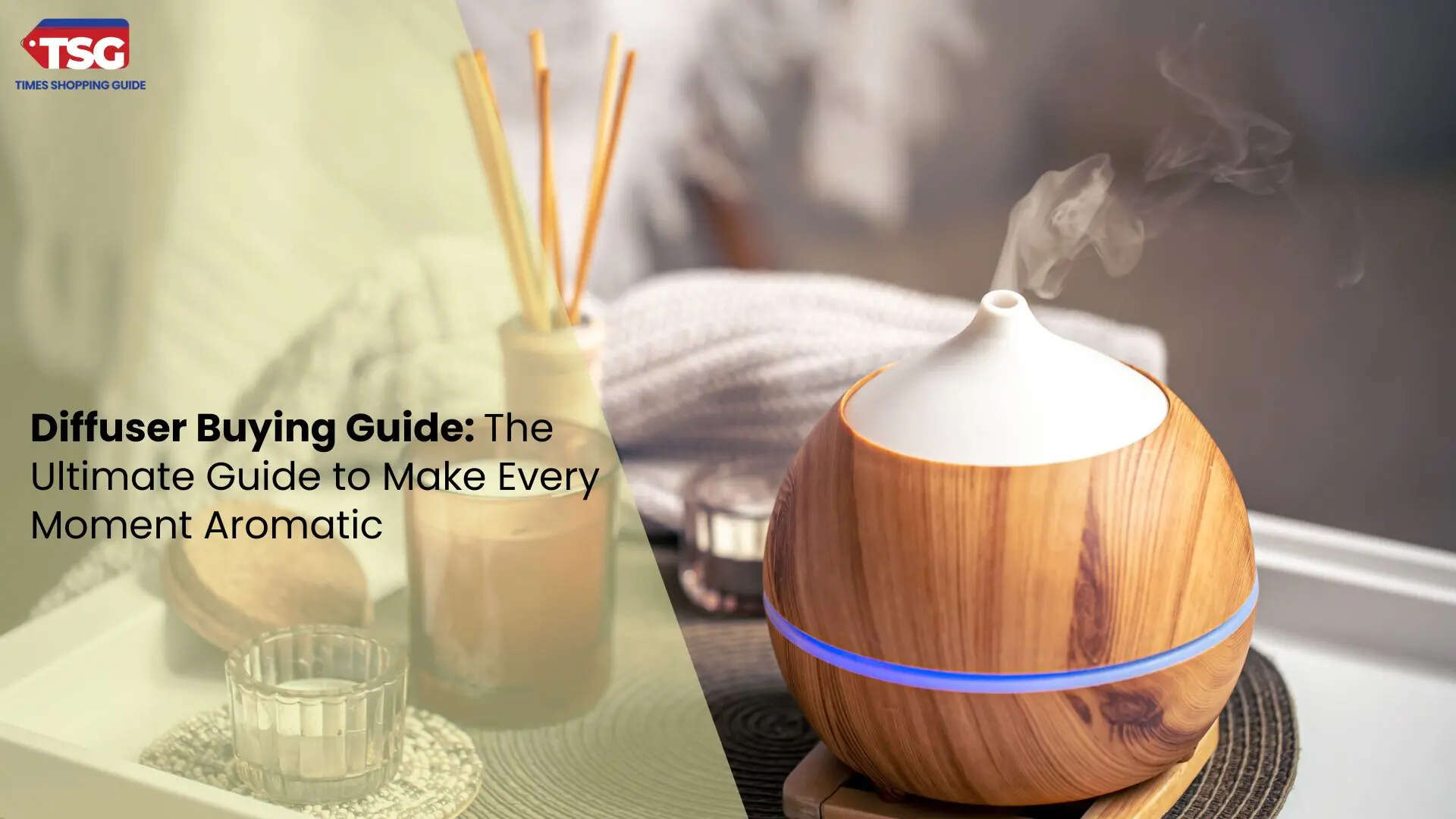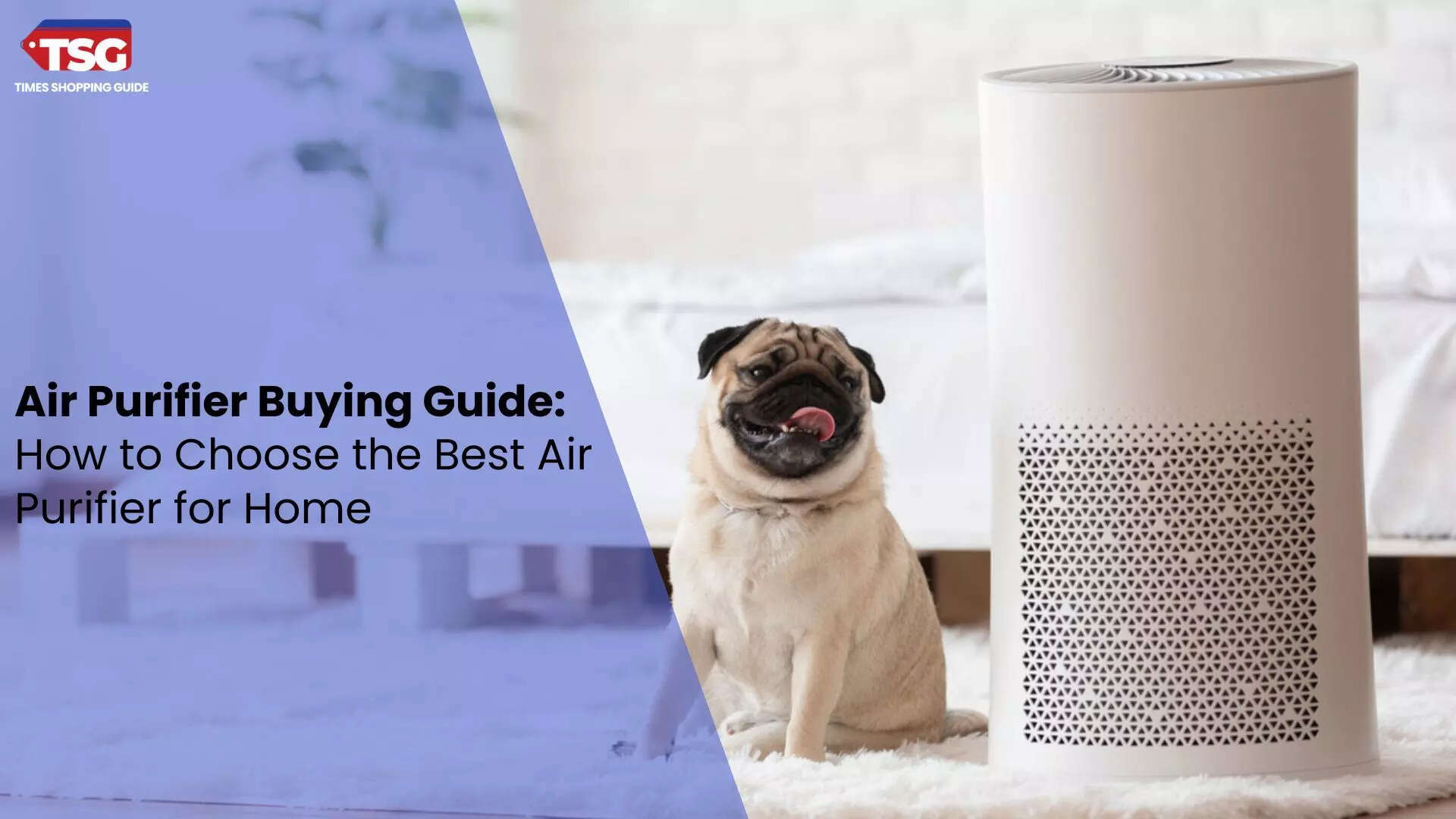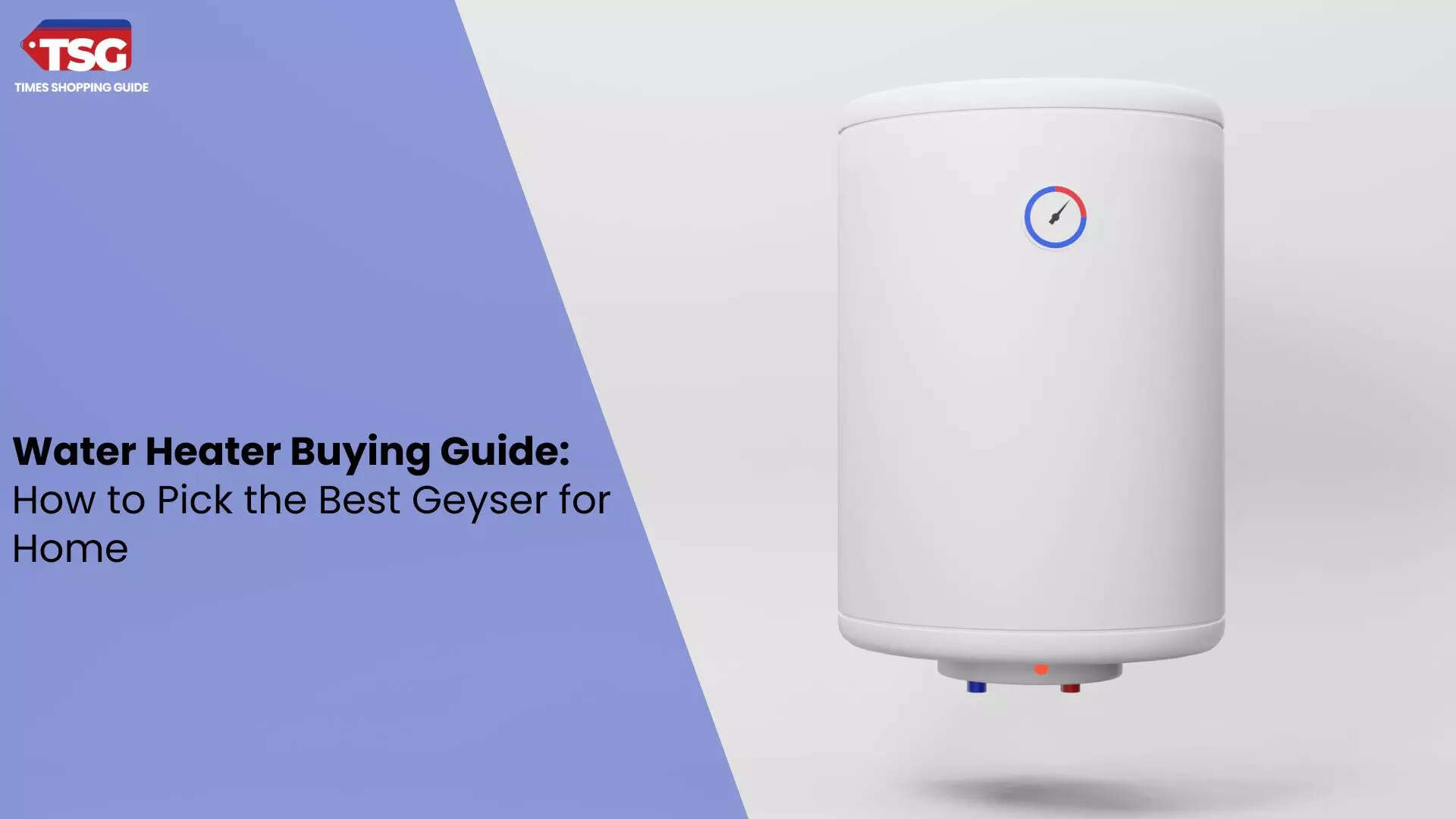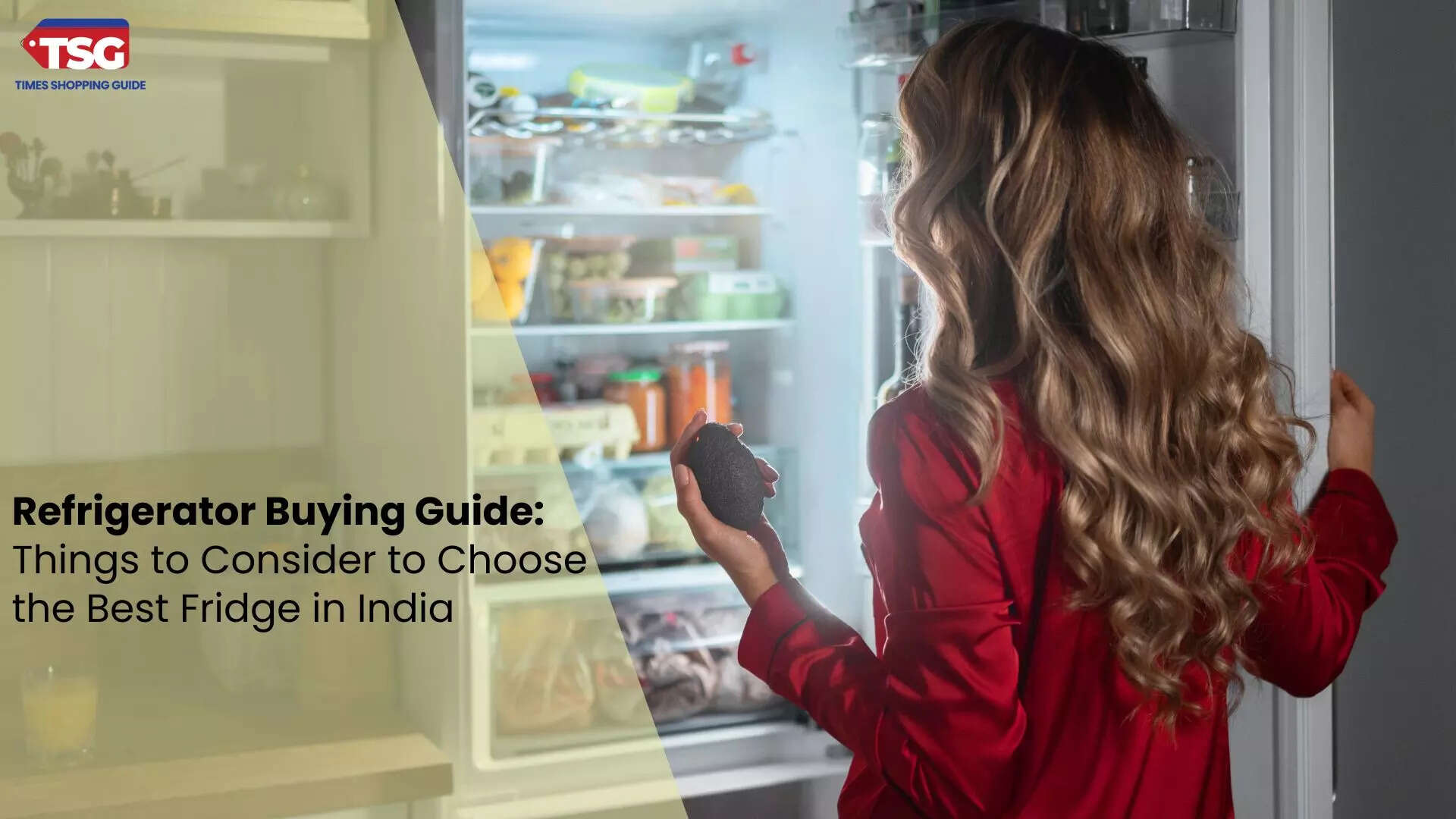- home
- appliances
- buying guide
- diffuser buying guide the ultimate guide to make every moment aromatic
Diffuser Buying Guide: The Ultimate Guide to Make Every Moment Aromatic
Aromatherapy has become a popular way to enhance well-being, and a diffuser is one of the best ways to enjoy the benefits of essential oils. This buying guide simplifies choosing the best diffuser, providing all the essential information you need to make an informed decision.

Additionally, it provides tips on choosing the right essential oils and how diffusers can enhance different areas of your life, from improving sleep to boosting energy. With the right diffuser, every moment can be aromatic and soothing, elevating your environment quickly.
What Is a Diffuser?
A diffuser is designed to disperse essential oils into the air, creating an aromatic environment. Various diffusers are available, each using different methods to release the oils. The essential oils are vaporised, nebulised, or heated to produce a fragrant mist that fills the space around you. The most common types of diffusers include ultrasonic, nebulising, evaporative, and heat-based models.
Why Should You Use a Diffuser?
Essential oils have become popular for improving health and creating a pleasant environment. Using a diffuser helps to distribute the aroma evenly throughout a room, which can help with various issues:
- Stress Reduction: Aromatherapy is widely known for its ability to reduce stress and promote relaxation. Lavender, chamomile, and eucalyptus are popular oils that create a calming effect.
- Sleep Improvement: Certain essential oils, such as lavender and sandalwood, often improve sleep quality by promoting relaxation.
- Mood Enhancement: Diffusing oils like citrus, peppermint, and bergamot can uplift your mood, boost your energy, and improve mental clarity.
- Respiratory Support: Some essential oils, such as eucalyptus and tea tree oil, are known for their ability to support respiratory health, especially during cold and flu season.
- Improved Focus: For work or study environments, diffusing oils like rosemary, lemon, and peppermint can enhance focus and concentration.
Overall, diffusers create an immersive sensory experience that makes your space smell pleasant and provides several health benefits.
Types of Diffusers
When shopping for a diffuser, understanding the different types is key to making an informed decision. Each type operates differently and offers various advantages. Below, we explore the most common types of diffusers:
1. Ultrasonic Diffusers
Ultrasonic diffusers are by far the most popular type of diffuser available. These diffusers use ultrasonic vibrations to break down essential oils into tiny particles, which are then mixed with water and released into the air as a fine mist. The ultrasonic vibrations create a cool mist that is soothing to inhale.
Pros:
- Quiet operation: Ultrasonic diffusers are extremely quiet, making them ideal for use in bedrooms, offices, or any space where noise is a concern.
- Humidification: These diffusers also act as humidifiers, adding moisture to the air, which is especially beneficial in dry environments.
- Versatile: Many ultrasonic diffusers offer features like LED lights, timers, and adjustable mist settings.
Cons:
- Needs water: Ultrasonic diffusers require a combination of water and essential oils. An alternative diffuser type might be better if you use oils without water.
- Regular cleaning: These diffusers require regular cleaning to prevent mould and mineral build-up since water is involved.
2. Nebulizing Diffusers
Nebulising diffusers are known for their high-quality diffusion of essential oils. Unlike ultrasonic diffusers, nebulising diffusers don’t require water. Instead, they use an air pump to push air through a tube that breaks down the essential oils into tiny droplets, then disperse into the air as a mist.
Pros:
- Pure diffusion: Nebulizing diffusers release 100% essential oils into the air without any dilution from water.
- Strong aroma: Because these diffusers use undiluted oils, they produce a stronger and more concentrated scent.
- No heat or water required: Perfect for those who prefer pure, undiluted aromas.
Cons:
- No humidification: Nebulizing diffusers do not add moisture to the air, so they are unsuitable for dry environments.
- Louder operation: These diffusers tend to be louder than ultrasonic diffusers.
- Higher cost: Nebulizing diffusers are generally more expensive due to their design and performance.
3. Evaporative Diffusers
Evaporative diffusers are among the simplest types of diffusers. They use a fan to blow air through a filter or pad where essential oils are placed. As the air passes through the filter, the oils evaporate and are dispersed into the air.
Pros:
- Simple to use: Evaporative diffusers are easy to operate and maintain, making them a great option for beginners.
- No water or heat: These diffusers do not require water or heat, making them a good option for people who prefer a dry diffusion method.
Cons:
- Inconsistent aroma: Since the rate of evaporation can depend on the airflow and temperature, the strength of the aroma may vary.
- Limited control: Most evaporative diffusers don’t offer much control over the intensity or duration of diffusion.
4. Heat-Based Diffusers
Heat-based diffusers use gentle heat to vaporise essential oils, releasing their fragrance into the air. These are typically smaller devices and look like small lamps or decorative items.
Pros:
- Silent operation: Heat diffusers are generally very quiet.
- Simple to use: Heat-based diffusers, like evaporative diffusers, are also very easy to operate.
Cons:
- May alter the properties of oils: Heat can degrade some of the essential oils' therapeutic properties, making them less effective for certain purposes.
- Less efficient: These diffusers disperse oils less evenly than other types.
Key Features to Consider When Buying a Diffuser
When selecting a diffuser, there are several factors to remember to ensure you’re making the right choice for your needs. Below are some of the most important features to consider:
1. Size and Coverage Area
Different diffusers are designed to cover spaces of different sizes. For example, a small ultrasonic diffuser might be ideal for a bedroom, while a larger nebulising diffuser may be better suited for an open living area. Always check the manufacturer's specifications to ensure the diffuser can effectively cover the size of the room where you intend to use it.
2. Run Time
The run time of a diffuser refers to how long it will operate before needing to be refilled or turned off. Some diffusers can run for several hours, while others may only last 1-2 hours. If you want a diffuser to run overnight or for extended periods, look for one with a longer run time or one with a timer feature.
3. Noise Level
While most diffusers are relatively quiet, some can produce a humming or buzzing sound during operation. If you plan on using your diffuser in a bedroom, office, or other quiet space, look for a model specifically designed for silent operation. Ultrasonic diffusers are typically the quietest, while nebulising diffusers may be louder due to the air pump.
4. Ease of Cleaning
Diffusers require regular maintenance to keep them running efficiently. Ultrasonic diffusers, for example, need to be cleaned regularly to prevent the build-up of mineral deposits and mould. Choose a diffuser that’s easy to disassemble and clean, especially if you use it frequently.
5. Design and Aesthetics
Since diffusers are often placed in visible areas of your home or office, you’ll want one that complements your décor. Many diffusers come in sleek, modern designs, while others may feature wooden or ceramic finishes to blend in with rustic or traditional interiors. Choose a diffuser that suits your style while providing the needed features.
6. Additional Features
Some diffusers have extra features such as LED lighting, multiple mist settings, automatic shut-off, and remote controls. LED lights can create a calming atmosphere, while mist settings can allow you to control the intensity of the aroma. An automatic shut-off function ensures that the diffuser turns off when the water runs out, preventing overheating.
Choosing the Right Essential Oils for Your Diffuser
Once you've selected your diffuser, it’s time to choose the essential oils that will best suit your needs. Essential oils come in a variety of scents and offer different therapeutic benefits. Here are some popular essential oils and their uses:
- Lavender: Calming, relaxing, and great for sleep.
- Peppermint: Energizing and helps with mental clarity.
- Eucalyptus: Supports respiratory health and helps clear nasal passages.
- Lemon: Uplifting, great for mood enhancement and focus.
- Tea Tree: Known for its antimicrobial properties and air purification.
- Frankincense: Grounding and supports meditation practices.
Choosing high-quality, pure essential oils is important to ensure you get the full benefits of aromatherapy. Always check that your oils are 100% natural and free from additives or artificial fragrances.
Disclaimer: Times Shopping Guide is committed to bringing you the latest products from the best brands. Our selection is based on market research and positive consumer feedback. Times Shopping Guide is also a part of an affiliate partnership. In line with this, we may receive a portion of the revenue from your purchases. Please note that the product prices are subject to change based on the retailer's deals.








